Parks are more than just green spaces. They’re places where nature, history, and culture intersect. From city oases to vast wilderness preserves, these 15 iconic parks offer memorable experiences and unique stories.
In this Remitly guide, you’ll see what makes these famous parks special and how to enjoy your visit.
What makes a park truly famous?
The most renowned parks often share key traits:
- Historical significance: Many began as royal gardens, sacred grounds, or conservation projects.
- Unique landscapes: Geothermal springs, desert plants, or other distinctive natural features.
- Cultural importance: Festivals, monuments, and traditions that reflect local heritage.
- Visitor experiences: A balance of conservation, learning, and recreation.
Size, age, attractions, and even appearances in films or series can shape a park’s worldwide reputation.
Urban oases: city parks that captured hearts
Central Park, New York City, USA
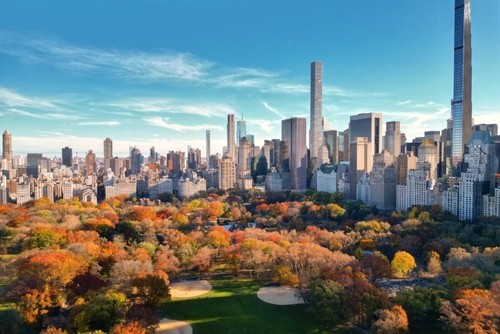
Spanning 843 acres in Manhattan, Central Park is a New York landmark. Designed in 1858, it was one of the first landscaped public parks in the US. Its many film and TV appearances make it familiar, but walking through it shows why locals treasure it.
Highlights include Bethesda Fountain, where you can catch live music, and Strawberry Fields, a quiet tribute to John Lennon. In winter, you can skate at Wollman Rink, while summer brings free concerts and theater performances.
Best time to go: Spring for blossoms, summer for concerts, autumn for foliage, or winter for skating and festive lights.
What to expect: A lively mix of locals and visitors. Comfortable shoes make exploring easier.
Hyde Park, London, England
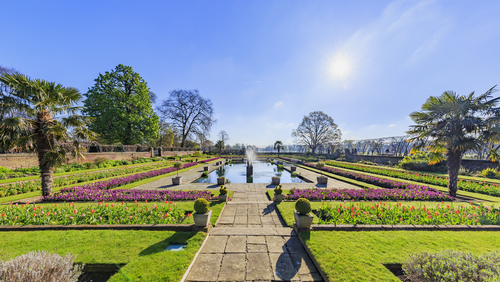
Once a royal hunting ground, Hyde Park stretches across 350 acres in central London. You can rent a boat on the Serpentine Lake, wander through the rose gardens, or pause at one of the many cafés.
For history lovers, head to Speaker’s Corner on a Sunday to hear locals debate politics or religion, a tradition that has continued for more than 150 years. During the holiday season, Winter Wonderland fills the park with lights, rides, and ice skating.
Best time to go: Summer for concerts and long daylight hours; winter for festive events.
What to expect: A mix of peaceful gardens and cultural events. Expect more crowds during festivals, but quiet corners are easy to find.
Ueno Park, Tokyo, Japan
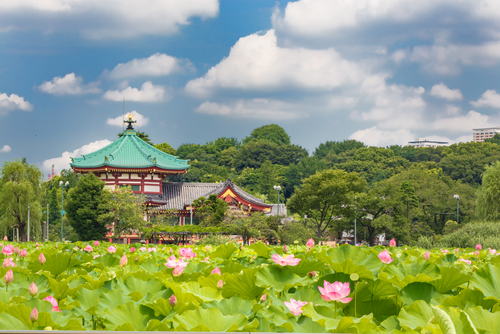
Ueno Park blends nature and culture in central Tokyo. In spring, cherry blossoms draw visitors for Hanami picnics under blooming trees.
Outside the blossom season, you can visit world-class museums like the Tokyo National Museum or the National Museum of Nature and Science, or explore the Ueno Zoo.
Best time to go: Late March to early April for blossoms, autumn for foliage, or summer for festivals.
What to expect: Cherry blossom season brings crowds, but peaceful spots can be found if you arrive early or wander off the main paths.
Natural wonders: parks that showcase Earth’s beauty
Yellowstone National Park, Wyoming, USA
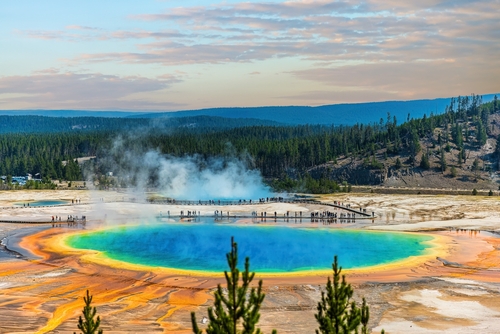
Founded in 1872, Yellowstone was the world’s first national park. With over 2 million acres, you can hike, camp, or drive scenic routes at your own pace.
Considered one of the most beautiful parks in the world, Yellowstone is famous for geothermal wonders like Old Faithful, which erupts every 90 minutes, and the rainbow-coloured Grand Prismatic Spring. Yellowstone is also one of North America’s most diverse ecosystems, home to bison, grizzly bears, bighorn sheep, and elk.
Conservation programs have helped restore species like the grey wolf, which was reintroduced in the 1990s after being absent for decades.
Best time to go: Late spring or early autumn, when wildlife is active and visitor numbers are smaller.
What to expect: Keep a safe distance from animals. Weather can change quickly, so layers help.
Banff National Park, Alberta, Canada
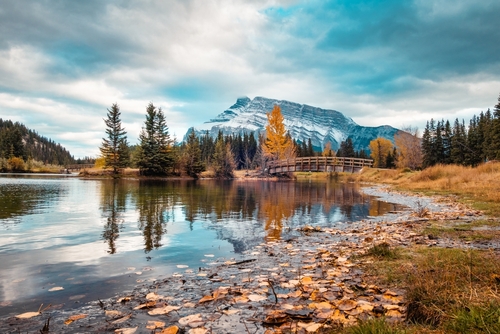
Established in 1885, Banff was Canada’s first national park and is often considered one of the world’s best national parks. Nestled in the Rockies, it features glaciers, waterfalls, and alpine lakes. Lake Louise, with its turquoise waters created by glacial minerals, is the park’s crown jewel.
Unusually, the town of Banff sits within the park, giving visitors the opportunity to stay, dine, and shop just steps from pristine wilderness.
In summer, you can canoe on the lake or explore trails through wildflower meadows. In winter, the park becomes a hub for skiing and snowboarding, with nearby hot springs offering a relaxing retreat. For a gentler option, a gondola ride up Sulphur Mountain provides panoramic views without the climb.Best time to go: July to September for hiking, December to March for winter sports.
What to expect: Trails range from easy lakeside walks to challenging alpine climbs. Wildlife like elk or goats are often visible from the roadside.
Kruger National Park, South Africa
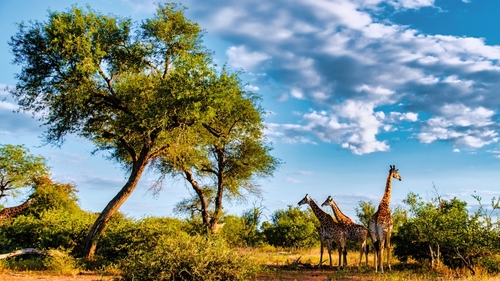
Kruger covers about 4.9 million acres and is one of the world’s most famous safari destinations. It’s home to the Big Five, lions, leopards, elephants, rhinos, and buffalo, plus over 500 bird species, not to mention reptiles and insects, making it one of Africa’s most biodiverse protected areas.
Decades of conservation work have helped protect endangered animals, and anti-poaching programs continue to protect rhinos and elephants. Visiting the park connects you with both wildlife and these global conservation successes.
Best time to go: May to September (dry season), when animals gather near waterholes.
What to expect: Guided safaris, self-drives, and overnight stays are all options. Binoculars can make it easier to spot wildlife at a distance.
Historical and cultural treasures
Retiro Park, Madrid, Spain
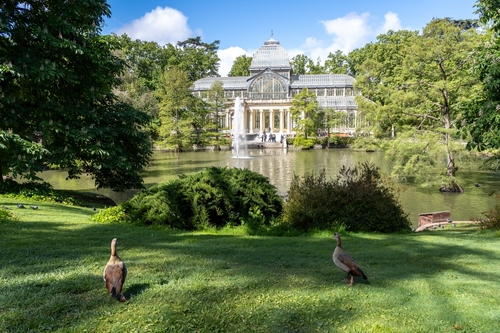
Once reserved for Spanish royalty, Retiro Park has been open to the public since the 19th century. Stroll elegant gardens, take a rowboat on the pond, or admire the Crystal Palace, a glass pavilion surrounded by greenery. Retiro is also full of sculptures, monuments, and shaded paths that invite you to linger.
Exploring Retiro connects you to the rhythm of Madrid—you’ll see families picnicking, friends gathering, and cultural events bringing the park to life.
Best time to go: Spring and autumn for mild weather and colorful gardens.
What to expect: A lively, central park with shaded spots to rest. Weekends are busy, so go on a weekday for a quieter visit.
Golden Gate Park, San Francisco, USA
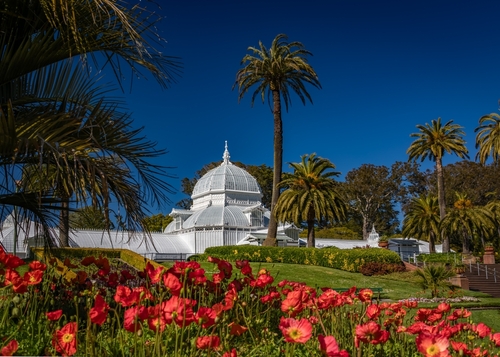
Built in the 19th century on former sand dunes, Golden Gate Park covers more than 1,000 acres. You can visit the Japanese Tea Garden, explore the Conservatory of Flowers, or enjoy world-class museums like the de Young. The park also hosts festivals and concerts that reflect San Francisco’s cultural diversity.
Best time to go: Year-round, though spring brings the best blooms and summer offers outdoor events.
What to expect: San Francisco’s weather is unpredictable, so bring a light jacket, even on sunny days. The park is vast, so plan time around the areas that interest you most.
Chapultepec Park, Mexico City, Mexico
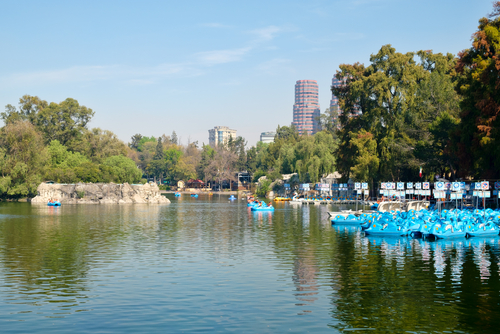
Chapultepec Park is a cultural landmark with roots that stretch back to the Aztecs. Covering more than 1,600 acres, it’s often called the “lungs of the city” and remains one of the largest urban parks in the world.Explore Chapultepec Castle for sweeping city views, or visit the National Museum of Anthropology, home to the largest collection of ancient Mexican art. The park also has lakes, botanical gardens, and a zoo.
Best time to go: Weekdays in spring or autumn for mild weather and fewer crowds.
What to expect: Comfortable walking shoes are a must to explore the park fully.
Unique landscapes around the globe
Torres del Paine National Park, Chile
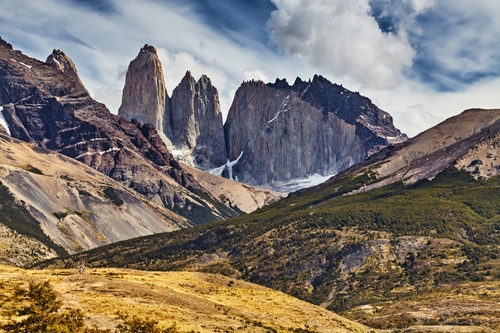
Torres del Paine is a renowned park, beloved for its jagged peaks, glaciers, and turquoise lakes. You can tackle multi-day treks like the “W” route or enjoy shorter walks with stunning views.
If you’re into photography, you should consider visiting at sunrise as the mountains glow with the changing light.
Best time to go: October to April (spring and summer in the Southern Hemisphere).
What to expect: Weather shifts quickly, so bring layers and waterproof gear. Hiking options range from easy day hikes to challenging multi-day treks.
Fiordland National Park, New Zealand
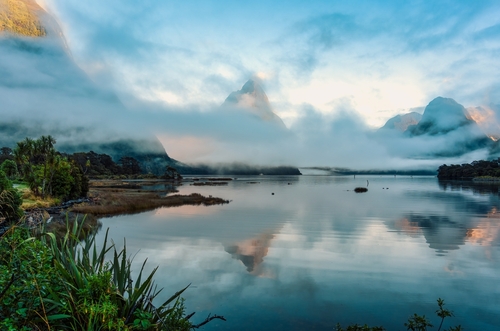
On New Zealand’s South Island, Fiordland feels almost otherworldly. Milford Sound, with its cliffs and waterfalls, is sometimes described as the “eighth wonder of the world.” As a UNESCO World Heritage Site, Fiordland is recognized for its unique ecosystems. If you love adventure, this park offers everything from multi-day hikes like the Milford Track to peaceful cruises where you can simply take it all in.
Best time to go: November to March for milder weather and more daylight hours.
What to expect: Wet conditions are normal, so waterproof clothing helps.
Zhangjiajie National Forest Park, China
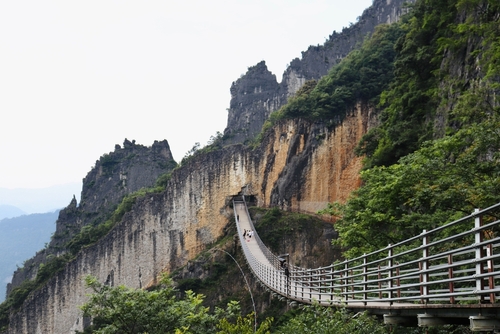
In China’s Hunan Province, Zhangjiajie is a world-famous national park. Its sandstone pillars inspired the floating mountains in the film Avatar.
Explore trails that wind among the tall rock formations, cross the famous glass bridge, or ride a cable car for sweeping views of lush forests.
Best time to go: April to October for warmer weather and clearer skies.
What to expect: Some trails are steep or crowded. Comfortable shoes are a good idea, and early arrival can help you enjoy quieter viewpoints.
Desert and tropical paradises
Joshua Tree National Park, California, USA
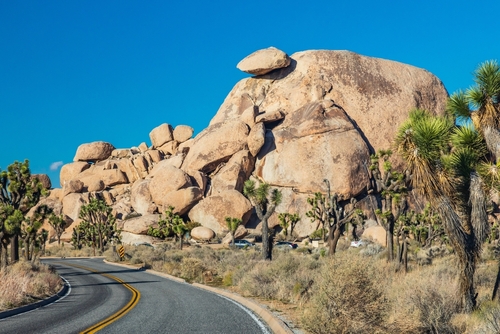
Joshua Tree’s desert landscape features its namesake trees and rugged rock formations across 800,000 acres.
The park offers trails for all levels, or you can try rock climbing on some of the park’s famous granite boulders. Joshua Tree is renowned for its dark nighttime skies, making it an excellent spot for stargazing and night photography.
Best time to go: October to May for cooler hiking weather..
What to expect: Bring water, sun protection, and layers for cool nights. Trails vary in difficulty, so choose one that suits your comfort level.
Manuel Antonio National Park, Costa Rica
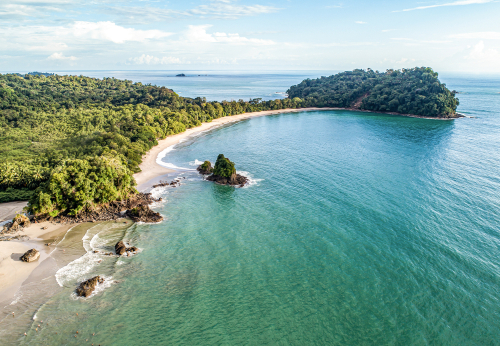
Established in 1972, Manuel Antonio offers a remarkable mix of rainforest, beaches, and coral reefs.
You can hike trails around Punta Catedral for panoramic views, relax on beaches, or snorkel in clear waters. The rainforest is alive with wildlife, including sloths, iguanas, and the rare squirrel monkeys.
Best time to go: December to April (dry season) for easier access to trails.
What to expect: Trails can be muddy during the rainy season, so wear sturdy shoes. Guided tours can help with wildlife spotting and learning about conservation.
Kakadu National Park, Australia
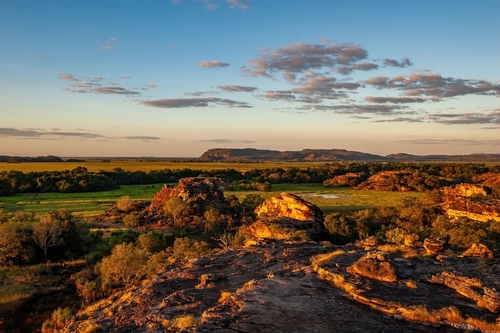
A UNESCO World Heritage site, Kakadu spans wetlands, escarpments, and woodlands. It’s home to crocodiles, birds, and rare plants, as well as ancient Aboriginal rock art.You can hike, take a river cruise, or learn about Indigenous heritage, experiencing a blend of adventure and cultural insight.
Best time to go: May to October (dry season) for comfortable weather.
What to expect: The wet season limits trail access in some areas. Local guides offer cultural tours.
Planning your park adventures
Ready to explore one of these famous parks? A little preparation makes all the difference. Think about timing—do you want cherry blossoms in Tokyo, wildlife spotting in Africa, or snow sports in Canada? Some parks require reservations, so check booking details ahead of time.
Travel responsibly by carrying reusable water bottles, staying on marked trails, and respecting local guidelines. Entrance fees vary, but many parks offer regional or annual passes.
Finally, consider your own interests. Do you enjoy photography, hiking, or cultural history? Choosing parks that align with your passions can make each visit more meaningful.
Preserving natural heritage for future generations
The world’s iconic parks are more than scenic escapes—they connect us to nature, culture, and history. From bustling city gardens to remote wilderness, each one tells its own story.
Visiting responsibly ensures these iconic natural spaces remain vibrant for generations. Supporting conservation through donations, eco-friendly tours, or simply by following park rules, helps protect these landscapes.
FAQs
What is the most visited national park in the world?
The Great Smoky Mountains National Park in the US tops the list, welcoming more than 12 million visitors annually. In Asia, Zhangjiajie National Forest Park in China also draws millions each year.
Are there entrance fees for most famous parks?
Many urban parks, like New York’s Central Park, are free. National parks usually charge entrance fees, which may apply per person, per vehicle, or by pass.
What should I pack when visiting world-famous national parks?
Comfortable shoes, weather-appropriate clothing, sunscreen, water, and snacks help make your visit more enjoyable. For remote areas, extras like navigation tools, inspect repellent, and a small first aid kit can be useful.
How can I support park conservation efforts?
You can donate to official park organizations, choose eco-friendly tours, or volunteer with local conservation projects. Even small actions, like respecting park rules, help protect these iconic green spaces.